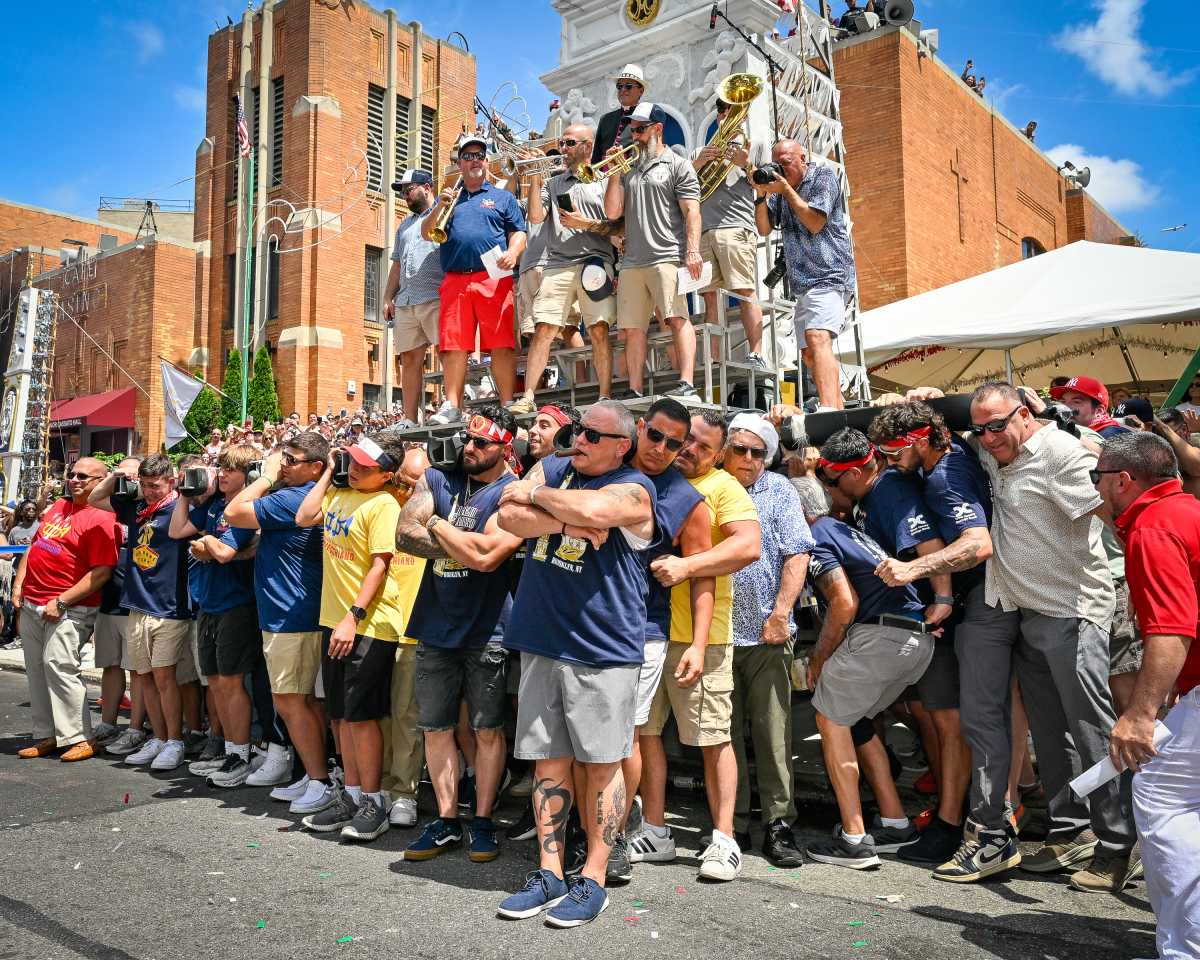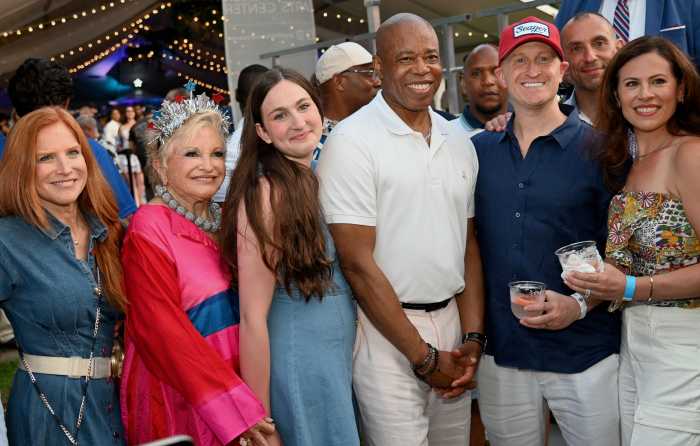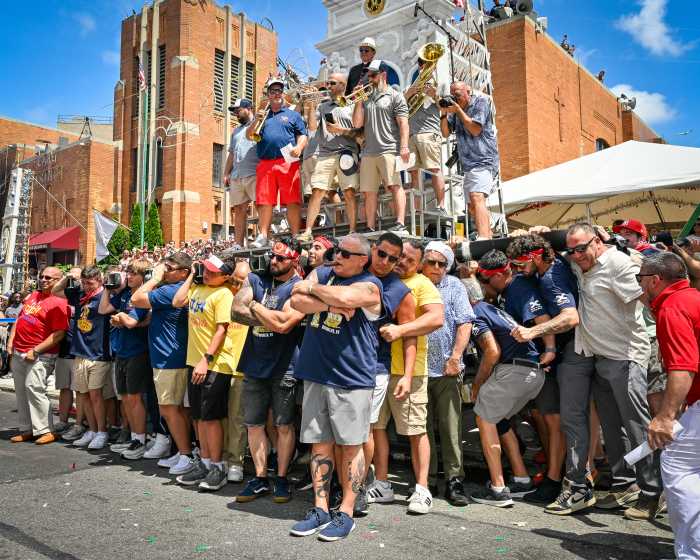BY JERRY TALLMER | Mars Ben, she called me from when I was quite small. Let’s see. I was born 1920. “The Birth of a Nation” had blossomed upon us in 1915. It wasn’t until I was old enough to explore the films of Griffith one by one that I fully realized how surreal, how grotesque it was for a brainy colored woman in New York City of the 1920s to nickname a white boy she loved after a black-inflected “Master Ben,” the Little Colonel of the racist Griffith saga.
I called her G.G., or Gee-Gee, and most other people did too. I don’t know where that came from. She had been born in North Carolina, her proper married name was Blanche Avalony, her husband of many years being John Avalony, a little ineffectual Italian guy (i.e., Italian-American) who was an elevator operator when he worked, but whose principal visible job was to walk their dog, a tiny uptight yappity Boston bull, twice a day. Whenever my brother and I came to visit her in Harlem, she insisted the dog accompany us for protection on the way back to the subway — that tiny, noisy creature!
G.G. also had a boyfriend, a redheaded Irish guy named George Dunn, drummer in a number of 1920s jazz bands. I never once met him in his or my life, but G.G. made him a tangible, visible presence with constant sagas about her and George Dunn’s surreptitious get-togethers.
She had come to work for us when I was one month old — my mother being helpless with a new baby — and stayed for nearly 30 years, until the death of my father in 1949, and even beyond that.
My mother was the only person I knew who called her Blanche. Well, maybe I’m fabricating that. But I’m not fabricating the moment in which, with G.G. behind me, I pushed open the lace-curtained French doors to the living room, stuck my head in, and, to a roomful of my parents and their guests, brashly proclaimed: “Mother likes Peter better than she likes Daddy.”
Peter was the elegant Peter Müller Munk, the Berlin-bred artist and silver craftsman and — later, after she and Peter were married and moved to Pittsburgh — industrial designer of worldwide standing at PMM Associates and Carnegie Tech.
Some 40 years later, when Dorothy Schiff had had the bright idea of sending a number of her staffers back to the places of their youth — in my case, 955 Park Avenue at 82nd Street, 12th (top) floor — I stood before those very same lace-curtained French doors, and pushed them open. But this time there was no G.G. behind me, urging me on.
I can remember something else. Another day, another room, probably another apartment. In one corner, my enraged mother. “Albert, do something. Punish the boy!” In another corner, my hapless father. And in a third corner, huddled together as protectively as in some ancient Greek or Roman statuary, G.G. with her arms around me. “Mr. Tallmer,” she is saying coldly to my father, “if you lay a hand on this boy, I will kill you.”
Nobody moves and the memory ends. Only to resume one world war later, when I overhear G.G. saying to my father — this was at 25 West 68th Street, when I was scouring the Village for a spot in which to live — “He just wants a place of his own. A place where he can bring women.”
But it was my father whom G.G. really loved. When he went, she went.
It would require a D.W. Griffith — or a Charlie Chaplin — to do justice to the next scene. It is a flashback to around the years 1931-32. My mother, my kid brother Johnny, and I are debarking a German-American ocean liner at Hamburg, Germany, where my mother’s first cousin, Annie J., is waiting for us with her children at the dock. Also with us, believe it or not, all dolled up in the finest of her transatlantic best, is none other than our own maid of all work, Mrs. Blanche (G.G.) Avalony, of 50 West 112th Street, Harlem, U.S.A.
Yes, kiddies, in those years — looming Hitler years — some overseas voyagers still brought their personal maids with them to Europe.
You know how with arriving or departing (or sinking!) ocean liners, everybody rushes to one side or the other of the vessel in question?
That was happening as hundreds of passengers from the U.S. flocked to the shore side of this vessel, G.G. in furry elegance among them. She stopped pressing forward only long enough to bend down and sweep up something glittery at her feet. A pin of some sort. Hooking it to the fabric at her neck, she swept ashore — despite glares of naked hatred from every German at the scene… .
Fear and hatred. Blanche Avalony, American Negro. What gives?
“Let me see that pin,” says no-nonsense Annie J…once we’re ashore. “Thought so. That’s a swastika. A very strange decoration for someone of her color.” Cousin Annie tossed the offending pin into the fireplace.
Some dozen years later I had the pleasure of being present at the dropping of a couple of 500-pound bombs on the Shanghai to which refugees Annie J. and her more-Nazi-than-the-Nazis children had taken refuge.
It was G.G. (or “Geege”) who brought Christmas trees and Easter eggs into our house, and more important than that, gave body and shape to the gods and goddesses of Moviedom — Georgie Jessel, Eddie Cantor, Al Jolson, John Barrymore, Lionel Barrymore, Ethel Barrymore, Rudolph Valentino, Lilian Gish, Norma Shearer.
I remember her telling me over and over, acting it out — how a cockeyed, fur-coated John Barrymore, high as a kite, fell into her arms, sobbing like a baby, as she came to let him in at the front door of his wife’s domicile. One of his wives… .
As in Tony Kushner’s “Caroline, or Change” of another, later, time and place, I more or less lived in the kitchen — G.G.’s kitchen, small as it was — in all the years before I went away to college and then the war. I do not think either of us ever mentioned the incident of the swastika pin, but no matter. G.G. has added something during the war, a new layer of personal expression — a flaming orange hairdo.
Jump cut 20 years, to London 1964. I pick up a paperback copy of “The Night Hamburg Died,” by Martin Caidin.
Hamburg, Germany, had died under British firebombs 20 years earlier. All those people who had looked upon Blanche Avalony with such naked hatred — dead, all dead.
I open the paperback. Page 1. Sir Arthur Harris, the R.A.F.’s “Bomber Harris,” is standing on a rooftop in burning London.
“They have sown the wind,” he is saying grimly. “Now let them reap the whirlwind.”
Mars Ben, that goes for you too. Guilt, guilt… .
My brother’s wife, Dr. Margot Tallmer, calls to say that G.G. is in Bellevue Hospital. Looks serious. I grab a shirt, head for Bellevue. A place I hate; everybody hates.
I find Blanche Avalony, alone on a bed in an empty ward. She looks out of it. I take her hand. Kiss it. She stirs. I reach in my pocket and find some pitiful paper money.
“Please, sir,” she says, as I fish out the largest bill I have on me, a $10. “Please, sir, do you know a writer named Jerry Tallmer?”
Heartbeat.
I press the $10 bill into her hand and walk out of Bellevue, slow and then fast, guilt bursting from every inch, every step, every pore.
This piece of Jerry Tallmer’s, written this past July, was read aloud by theatrical press agent Jonathan Slaff at an informal memorial on Nov. 14 attended by Tallmer’s family and friends. Tallmer died Nov. 9 at age 93.







































